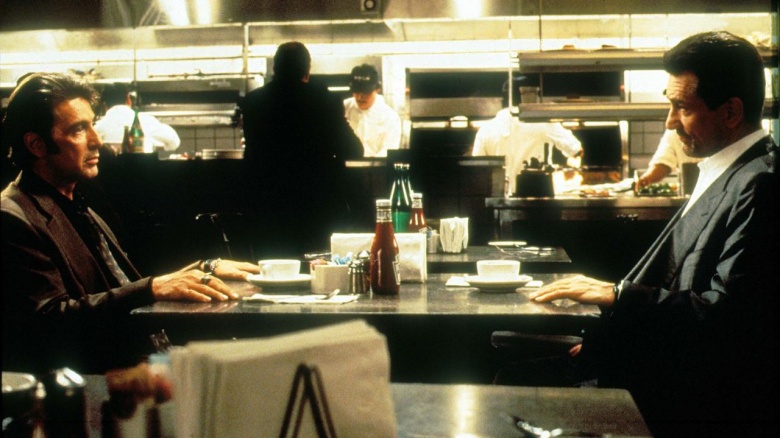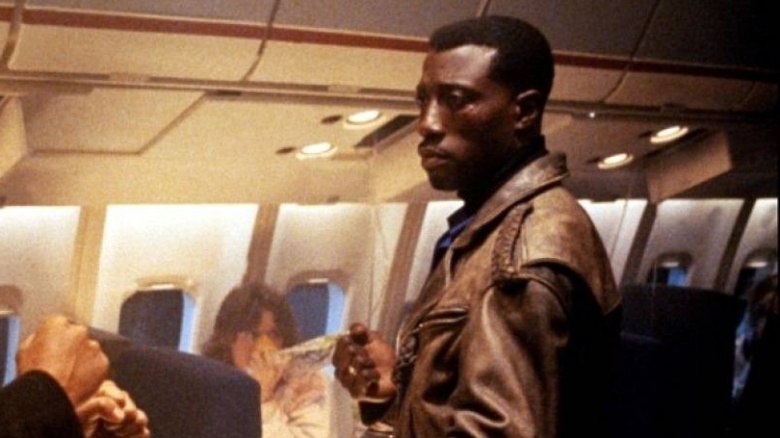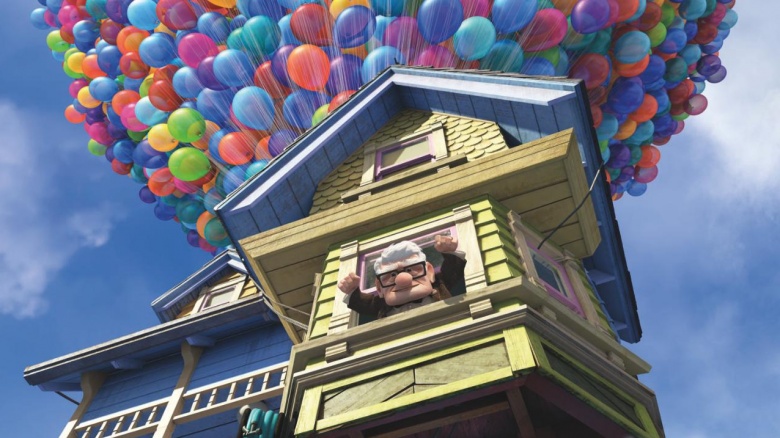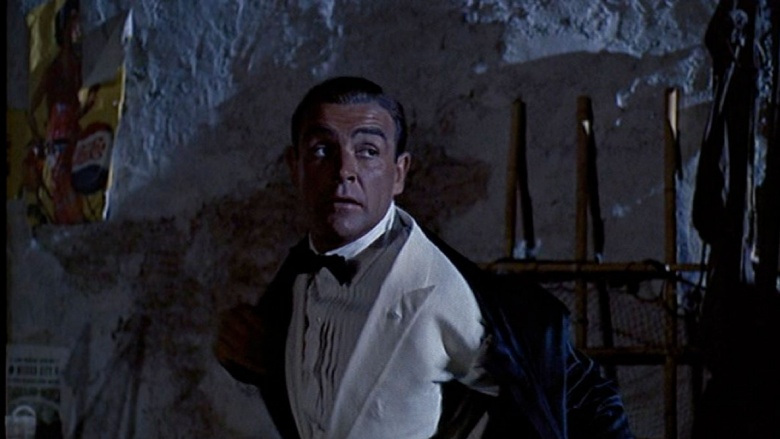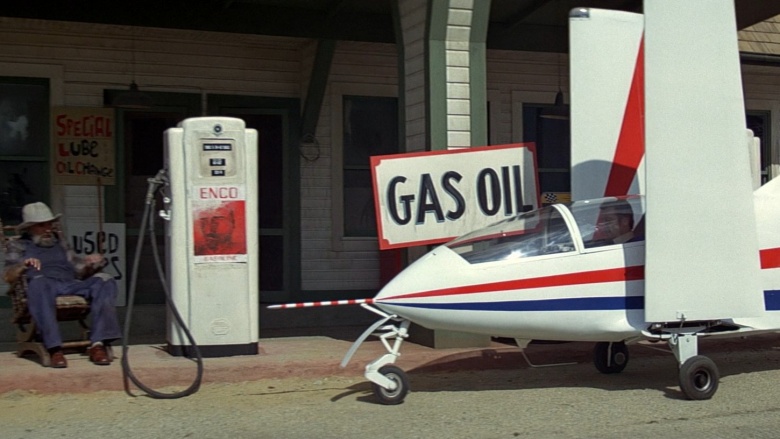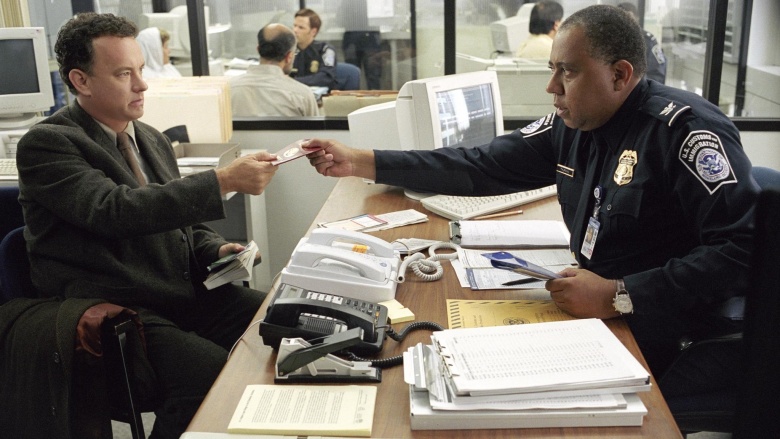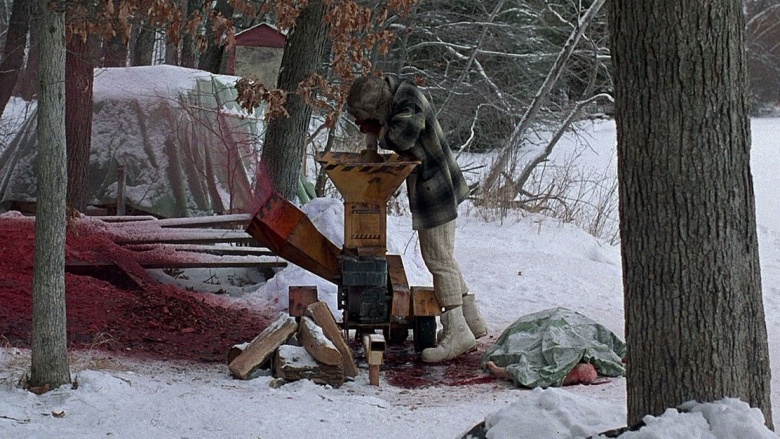Movie Scenes Taken From The History Books
Some movies make a big deal about being based on a true story, but filmmakers don't always go out of their way to reveal the real-life events they depict in their work. Here are some memorable Hollywood moments that actually happened—and were sometimes even crazier in real life than they were on the big screen.
Heat: The cop and the criminal have coffee
Aside from being one of the sleeker ensemble action thrillers of the 1990s, Michael Mann's Heat is also loosely based on the true story of ex-Alcatraz convict Neil McCauley. After being released from the joint, McCauley returned to his life of crime, planning and organizing a series of heists, and his exploits attracted the attention of a cop named Charlie Adamson—who, as luck would have it, later became a friend of Mann's. As Adamson told Mann, he developed a sort of grudging respect for McCauley during his pursuit of the criminal, and their cat-and-mouse game even included sitting down face to face for a cup of coffee at one point. Mann dramatized that meeting to deliciously tense effect in Heat, giving cinematic titans Robert De Niro (as McCauley) and Al Pacino (as Adamson's proxy, a cop named Vincent Hanna) their first-ever shared scene.
Passenger 57: Jumping out of a hijacked plane
When Wesley Snipes kicked bad-guy butt in 1992's Passenger 57, it looked like little more than yet another variation on the Die Hard formula of "supercop fights crooks in a confined space"—in this case, on an airplane mid-flight. Among the movie's more ridiculous set pieces is a scene in which Snipes' character, airline security expert John Cutter, jumps out of the plane's cargo hold after forcing an emergency landing, only to survive. That's a pretty wild stunt, but it's still not quite as crazy as the actual 1948 hijacking that got there first. The main difference? The guy who jumped out of the hijacked plane in real life turned out to be the one who planned the hijacking. And then, due to jurisdictional disagreements and a complete lack of legal precedent for airborne piracy, he ended up walking without ever facing a trial. Come to think of it, that sounds like a much better movie than Passenger 57.
Up: Using balloons to fly
The best Pixar films rest colorful adventures on a bedrock of real emotion, and 2009's Up fits that description perfectly. Carl Fredricksen (Ed Asner) has been left emotionally devastated by his wife's passing, and finds himself increasingly aggravated by the impositions of modern society. So he escapes by tying thousands of helium balloons to the house and flying away. In real life, Carl would have needed a lot more helium to actually lift his home, but there's actually a bit of fact-based precedent for Up's antics. In 1982, an impressively ballsy California man named Larry Walters took to the skies in a lawn chair after filling more than 40 weather balloons with helium. Walters ultimately soared to 15,000 feet and sailed from San Pedro to Los Angeles—roughly 24 miles—before entering controlled airspace near the airport, bungling his landing, and causing a blackout by getting his craft tangled in power lines.
Goldfinger: James Bond's wetsuit tuxedo
The Bond movies are known for their killer opening sequences, and the one from 1964's Goldfinger is a doozy. Agent 007 slips out of the water in a wetsuit, blows up a building, then doffs his garb to reveal a perfectly pressed tuxedo before strolling off to suck face with one of the local beauties and club a would-be assassin out of commission with a lamp. It's vintage over-the-top Bond, but the thing is, it actually happened—well, sort of. During World War II, a secret agent named Peter Tazelaar twice retrieved Allied hostages from Nazi casinos by scubaing onto a nearby shore with a tux under his wetsuit. He pretended to be drunk in order to lull security into thinking he wasn't a threat, and then waltzed out undetected after freeing the captive agents. Rarely do real-life spies seem as cool as James Bond, but this is one guy who actually makes Bond look sort of dull.
Octopussy: Bond makes an emergency landing on a freeway
In another case of Bond imitating life, the opening scene from 1983's Octopussy finds 007 making a thrilling improvisation when his trip through the friendly skies in a tiny single-seat aircraft is cut short by a sudden fuel shortage. Taking advantage of the plane's size, Bond simply lands on the highway and putters up to a nearby gas station, drolly asking the attendant to "fill her up, please." That all seems too crazy to be true, but the sequence is really based on actual events. In 1975, professional stunt pilot Corkey Fornof (yes, that's really his name) was in the cockpit of the same type of microjet when he ran out of fuel. But instead of panicking, he simply touched down in traffic, coasting down an available lane (and, presumably, past commuters who never, ever forgot the sight of a plane on the freeway) until he was able to safely maneuver onto an exit.
The Terminal: Tom Hanks gets trapped in an airport
In 2004's The Terminal, Tom Hanks plays a man from the fictional country of Krakozhia who lands in New York City only to discover that, in the time it took him to finish his flight from home to JFK Airport, his homeland has fallen into civil war and his passport is no longer valid. Unable to enter the U.S. or return home, he falls into a stateless limbo and ends up living at the airport for nine months. That all seemed pretty far-fetched to just about everyone—except Mehran Karimi Nasseri, the real-life Iranian refugee who lost his papers en route from Belgium to England and ended up having to live at Paris' Charles de Gaulle Airport for almost 20 years. Coincidentally, 20 years is exactly how long it feels when watching The Terminal from start to finish.
Fargo: Using a wood chipper to dispose of a corpse
This 1996 Coen brothers classic boasts a number of memorable moments, including the scene late in the film when a criminal disposes of one of his former confederates by feeding his corpse into a wood chipper. Like a lot of appalling human behavior in the Coens' films, this grisly moment is laced with dark humor that recognizes the inherent absurdity of the situation, but it's inspired by a real-life story. A woman's 1986 disappearance was solved three years later with the discovery that her husband had murdered her and gotten rid of her corpse in the same undignified fashion.

